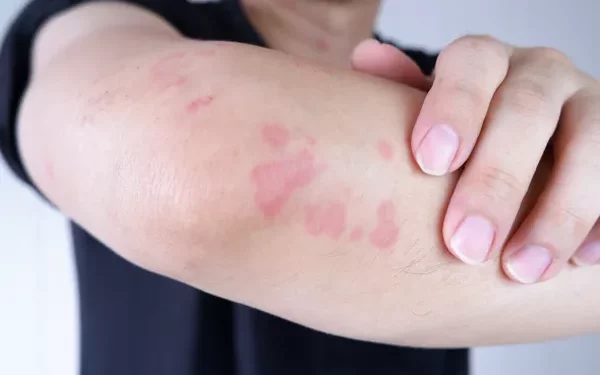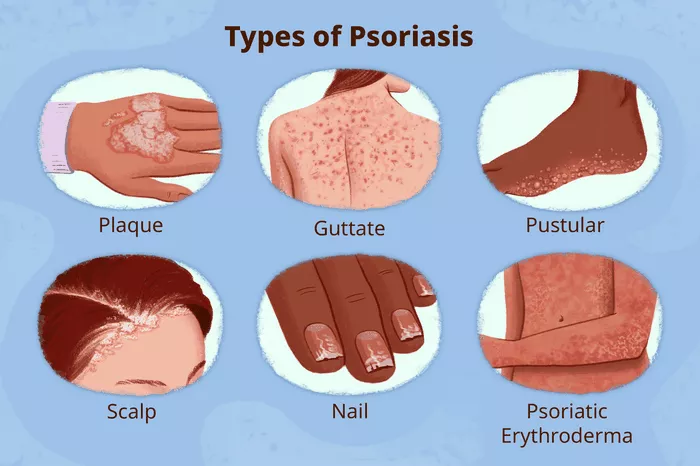Hives, also known as urticaria, are a common skin condition characterized by raised, red, and itchy welts. They can be triggered by various factors, including allergies, stress, infections, and medications. One question that often arises among individuals dealing with hives is whether scratching can exacerbate the condition and lead to its spread. In this article, we delve into the mechanisms behind hives, explore the effects of scratching, and assess the risks associated with this behavior.
Understanding Hives: Causes and Symptoms
Before delving into the spread of hives by scratching, it’s essential to understand the underlying causes and symptoms of this condition. Hives occur when certain cells in the skin release histamine and other chemicals into the bloodstream, leading to the characteristic redness, swelling, and itching.
Common triggers of hives include:
1. Allergens: Foods, medications, insect stings, and environmental allergens such as pollen or pet dander can trigger an allergic reaction leading to hives.
2. Infections: Viral or bacterial infections, including the common cold or strep throat, can sometimes lead to hives.
3. Stress: Emotional stress or anxiety can exacerbate hives or even trigger them in susceptible individuals.
4. Medications: Certain medications, such as antibiotics, nonsteroidal anti-inflammatory drugs (NSAIDs), and blood pressure medications, can cause hives as a side effect.
Symptoms of hives typically include raised, red welts on the skin that may vary in size and shape. These welts are often accompanied by itching, which can range from mild to severe.
The Role of Scratching in Hives
When faced with an itchy rash like hives, the natural inclination for many individuals is to scratch the affected area. However, scratching can have both immediate and long-term consequences for hives.
1. Immediate Effects: Scratching can provide temporary relief from itching by stimulating nerve endings in the skin. However, this relief is short-lived and often followed by an intensification of itching, known as the “itch-scratch cycle.” This cycle perpetuates the urge to scratch, leading to further irritation and inflammation of the skin.
Long-Term Consequences: Prolonged or vigorous scratching can damage the skin’s protective barrier, making it more susceptible to infection. Additionally, scratching can exacerbate inflammation and histamine release, leading to the spread of hives to adjacent areas of the skin.
Can Scratching Spread Hives?
While scratching itself does not cause hives to spread to other parts of the body, it can exacerbate existing hives and contribute to their persistence. When an individual scratches an area affected by hives, they may inadvertently release more histamine and other inflammatory substances into the surrounding tissue, leading to the spread of hives to adjacent areas.
Furthermore, scratching can cause physical trauma to the skin, leading to the formation of new hives or exacerbating existing ones. The broken skin barrier also increases the risk of secondary infections, which can further complicate the management of hives.
Managing Hives Without Scratching
Given the potential risks associated with scratching, it’s important for individuals with hives to explore alternative strategies for managing itching and discomfort. Here are some tips for managing hives without resorting to scratching:
1. Topical Treatments: Over-the-counter antihistamine creams or lotions can help alleviate itching and reduce inflammation associated with hives. Calamine lotion and oatmeal baths may also provide relief.
2. Oral Antihistamines: Oral antihistamines such as cetirizine, loratadine, or diphenhydramine can help control itching and reduce the severity of hives. These medications are available over the counter or by prescription.
3. Cool Compresses: Applying a cool, damp cloth to the affected area can help soothe itching and reduce inflammation. Avoid using hot water, as it can further irritate the skin.
4. Avoid Triggers: Identify and avoid triggers that exacerbate hives, such as certain foods, medications, or environmental allergens. Keeping a diary of symptoms can help pinpoint specific triggers.
5. Stress Management: Practice stress-reduction techniques such as deep breathing, meditation, or yoga to help manage emotional stress, which can exacerbate hives.
6. Seek Medical Attention: If hives are severe, persistent, or accompanied by other symptoms such as difficulty breathing or swelling of the face or throat, seek medical attention promptly. A healthcare professional can recommend appropriate treatment options, including prescription medications or allergy testing.
Conclusion
While scratching may provide temporary relief from itching associated with hives, it can exacerbate inflammation, contribute to the spread of hives, and increase the risk of complications such as infection. Understanding the underlying causes of hives and adopting alternative strategies for managing itching are essential for effective symptom control and prevention of complications. By following the tips outlined in this article and seeking medical attention when necessary, individuals with hives can better manage their condition and improve their quality of life.
























